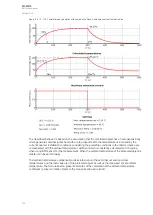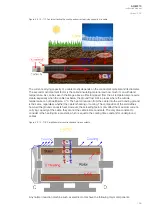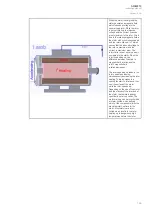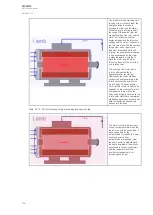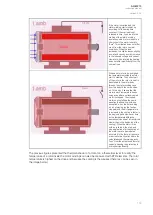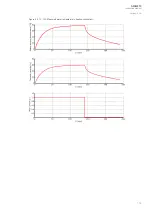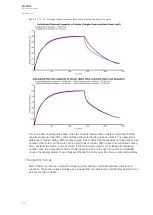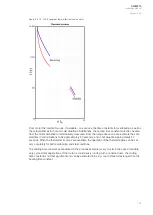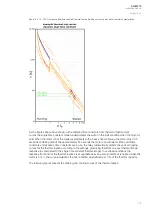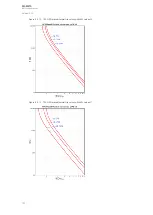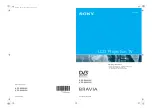
Figure. 5.3.13 - 124. Comparing dual time constant thermal replica tripping curves to given motor thermal characteristics.
As the figures above have shown, with estimated time constants from the motor thermal limit
curves the single time constant model underprotects the motor in the stall condition when the motor is
cold. When the motor is hot the model overprotects with a heavy hand, allowing the motor only 30.5
seconds of stalling time of the approximately 67 seconds the motor can withstand. When dual time
constants and dynamic time constants are in use, the relay automatically selects the correct tripping
curves for the thermal replica according to the settings, producing therefore an exact thermal image
response (as compared to the single time constant thermal image). In overload conditions the
response from both of the thermal replicas is acceptable as even a small overshoot is noticed when the
motor is hot. In the curve simulations the hot condition was defined as 70 % of the thermal capacity.
The following figures present the tripping and cooling curves of the thermal replica.
A
AQ
Q-M210
-M210
Instruction manual
Version: 2.04
176
Содержание AQ-M210
Страница 1: ...AQ M210 Motor protection IED Instruction manual ...
Страница 308: ...Figure 7 4 182 Example block scheme A AQ Q M210 M210 Instruction manual Version 2 04 307 ...
Страница 329: ...Figure 8 13 204 Panel cutout dimensions and device spacing A AQ Q M210 M210 Instruction manual Version 2 04 328 ...


